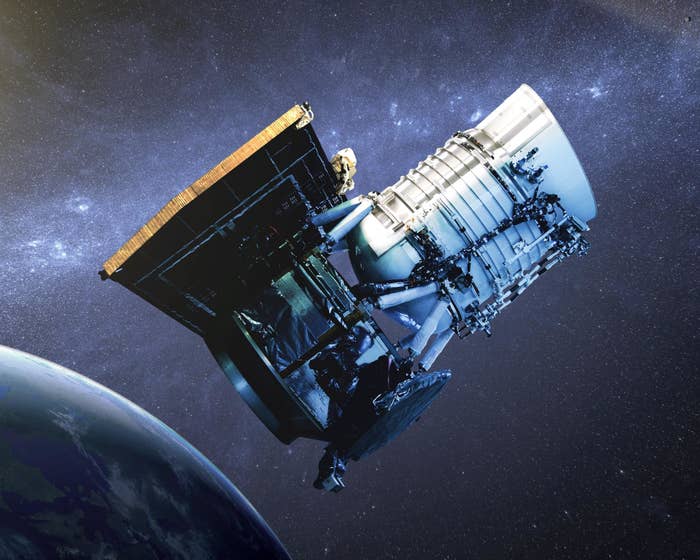
WASHINGTON — NASA committed on Monday to launching a spacecraft to spot dangerous asteroids, after a narrow miss with a record-sized asteroid this summer left the agency reeling.
The spacecraft, slated to be ready by 2025 if it gets $500 to $600 million of funding from Congress, should be able to detect 90% of all threatening space rocks aimed at Earth.
In July, the largest asteroid to come so close to Earth in a century passed within 41,000 miles of the planet, a close shave by astronomical standards. The asteroid — which was detected just 24 hours before the flyby by a small observatory in Brazil — led planetary defense scientists within the agency to question US asteroid detection capabilities, emails published by BuzzFeed News last week showed.
“This one did sneak up on us and it is an interesting story on the limitations of our current survey network,” Lindley Johnson, NASA’s planetary defense officer, wrote in an internal email days after the event.
The decision announced by NASA associate administrator Thomas Zurbuchen at a planetary science advisory committee meeting ended a 15-year impasse with Congress, which requested a survey of asteroids larger than 460 feet across in 2005. A June National Academies of Sciences report criticized Congress for never providing the funding for an asteroid-spotting spacecraft, stalled in review of its design since it was turned down as a science mission by NASA in 2014.
With the new announcement, NASA is signaling that improved satellite capabilities are a necessity, not a perk. “Make no mistake, the key objective here is planetary defense,” Zurbuchen said.
“We are finally going to rely on knowledge, rather than luck, as our plan for dealing with hazardous asteroids,” MIT planetary scientist Richard Binzel told BuzzFeed News. “NASA’s commitment to a space-based asteroid survey is a huge step forward for anyone who cares about human destiny.”
According to Zurbuchen, the asteroid surveyor will follow the design for the previously proposed Near-Earth Object Camera (NEOCam) spacecraft headed by astronomer Amy Mainzer of the University of Arizona, but will be developed by NASA’s Jet Propulsion Laboratory.

NASA plans to launch the prototype asteroid-deflecting Double Asteroid Redirection Test (DART) mission in 2021, aimed at smashing into the smaller “moonlet” of the double asteroid Didymos. The moonlet is about 525 feet across, roughly the size of the asteroids now seen as most likely to hit Earth without warning.

